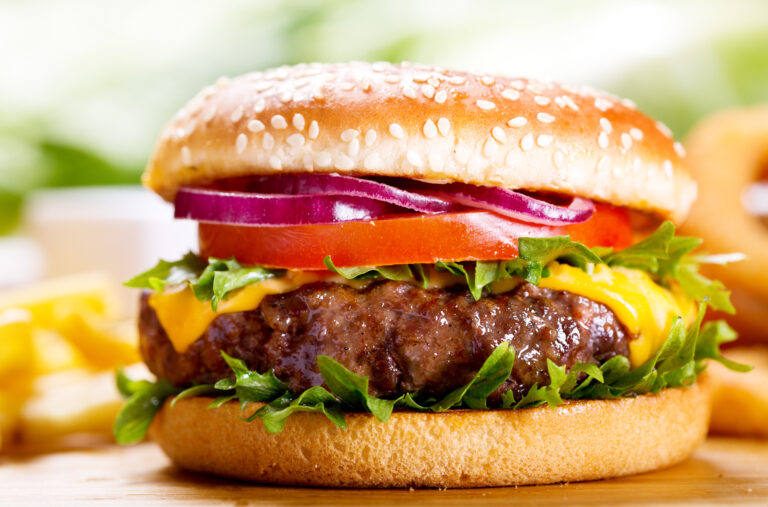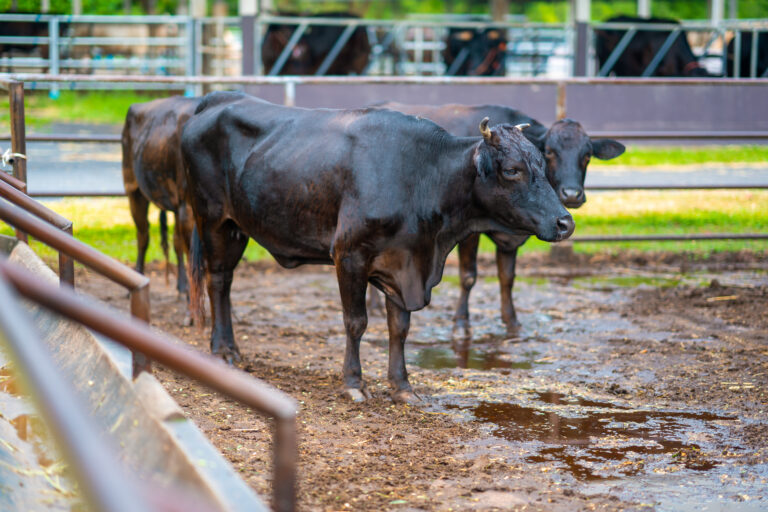5 Juicy Roast Beef Tips for Perfectly Tender and Flavorful Results
Achieve juicy roast beef perfection by selecting the right cut, marinating with flavorful ingredients, cooking low and slow, and carving for tenderness and presentation.

Craving a perfectly juicy roast beef? Discover the secrets to achieving tender, flavorful results every time.
Disclosure: As an Amazon Associate, this site earns from qualifying purchases. Thank you!
Selecting the Right Cut

Choosing the perfect cut is key to a juicy roast beef. Let’s get into the details.
Understanding Beef Cuts
Different beef cuts offer distinct textures and flavors.
- Chuck: Affordable and full of rich flavor from marbling.
- Rib: Tender and flavorful, an excellent choice.
- Loin: Lean but succulent; needs careful cooking.
- Round: Leaner, less tender; requires longer roasting.
Best Cuts for Juicy Roast Beef
Certain cuts excel for juicy roasts.
- Ribeye Roast: Ideal for juiciness and intense flavor.
- Tenderloin: Incredibly tender but requires precise cooking.
- Top Sirloin: Balanced in flavor and tenderness, great value.
- Tri-Tip: Versatile with robust flavor when slow-cooked.
Preparing Your Roast Beef

Perfect preparation sets the stage for a delectable roast beef meal. Follow these tips for a mouthwatering result.
Marination Secrets
Marinate your beef for rich flavor. Combine olive oil, garlic, rosemary, and a splash of red wine in a ziploc bag. Let sit for 4-24 hours in the fridge. The longer you marinate, the more pronounced the taste.
Bringing the Meat for Even Cooking
Bring meat to room temperature before cooking. This ensures even cooking without a cold center. Allow the beef to sit out for 30-60 minutes before roasting.
Cooking Techniques for Juiciness
For the ultimate juicy roast beef, nailing the cooking process is key.
Low and Slow: The Ideal Cooking Method
Cook at a low temperature for extended periods. This breaks down the connective tissues, resulting in tender meat. Aim for 250-300°F to keep the beef moist. Use a Dutch oven or a slow cooker for best results.
Using a Meat Thermometer for Perfect Doneness
Monitor the internal temperature closely. Insert the thermometer into the thickest part of the roast. Remove the beef at 130-135°F for medium-rare. Let it rest for 15 minutes; the temperature will rise, locking in the juices.
Handy Tips for a Juicier Roast Beef
Importance of Resting the Meat
Resting locks in juices. After cooking, let your roast beef rest for 15 minutes. This allows juices to be redistributed, ensuring each slice is tender and flavorful. Cutting too soon leads to dry meat as juices spill out. Cover it loosely with foil to keep it warm without steaming.
Basting Techniques to Enhance Flavor
Basting boosts flavor. Every 30 minutes, spoon-pan juices over the roast. Use a mixture of melted butter, garlic, and herbs for added richness. If you’re short on pan juices, use beef broth. This keeps the meat moist and adds layers of taste.
Common Mistakes to Avoid

When preparing roast beef, it’s crucial to avoid certain common pitfalls.
Overcooking the Beef
Overcooking dries out the meat and ruins its juiciness. Ensure you use a meat thermometer to check the internal temperature. Aim for 135°F for medium-rare or 145°F for medium. Pull the meat out 5-10 degrees before your target as it will continue to cook while resting.
Neglecting Meat Temperature Before Cooking
Starting with cold meat leads to uneven cooking. Let the beef sit at room temperature for 30-60 minutes. This step ensures consistent cooking and avoids the dreaded overcooked exterior with an undercooked center.
Enhancing Flavor and Texture

Elevate the deliciousness of your roast beef with these expert tips.
Creative Herb and Spice Rubs
Enhance your roast beef by using a variety of herbs and spices. Combine rosemary, thyme, and garlic for a classic flavor. For a spicy kick, use paprika, cayenne pepper, and cumin.
- Classic Mix: Blend rosemary, thyme, and garlic powder.
- Spicy Mix: Use paprika, cayenne, and cumin for heat.
- Zesty Blend: Try lemon zest, black pepper, and coriander for a fresh twist.
Glazing and Saucing for Added Moisture
Boost the juiciness by applying glazes and sauces. A honey and mustard glaze adds sweetness and tang. Baste your roast with red wine reduction for depth.
- Honey-Mustard Glaze: Mix honey, dijon mustard, and a touch of soy sauce.
- Red Wine Reduction: Reduce red wine with garlic, rosemary, and beef stock.
- Teriyaki Glaze: Combine soy sauce, brown sugar, and ginger for an Asian flair.
Serving Suggestions

Pairings That Complement Juicy Roast Beef
Pairing your juicy roast beef with the right sides elevates the meal.
- Potatoes: Roasted, mashed, or au gratin. These starchy sides soak up the beef juices.
- Vegetables: Steamed broccoli, glazed carrots, or roasted Brussels sprouts add color and freshness.
- Gravy and Sauces: Au jus, horseradish cream, or a red wine reduction enhances flavors.
- Bread: Warm dinner rolls or crusty baguette for a satisfying addition.
Carving Techniques for Best Presentation
Carving correctly maximizes tenderness and presentation.
- Rest First: Let the roast rest for 15-20 minutes. This locks in juices.
- Slice Against Grain: Slice using a sharp knife against the grain for tender pieces.
- Thin Slices: Thinner slices offer better texture and easier chewing.
- Angle: Hold the knife at a slight angle, creating wider and more visually appealing pieces.
Frequently Asked Questions
What is the best cut of beef for a juicy roast?
Selecting the right cut is crucial. The best cuts for a juicy roast are prime rib, sirloin tip, and tenderloin as they have the right balance of fat and tenderness, ensuring a flavorful and moist result.
How long should I marinate the beef before roasting?
Marinate the beef for at least 4 hours. For best results, marinate overnight. This allows the flavors to fully penetrate the meat and enhance its juiciness and taste.
Why should the beef be brought to room temperature before cooking?
Bringing the beef to room temperature ensures even cooking throughout. Cold meat directly from the fridge can cook unevenly, leading to parts being overcooked or undercooked.
How can I avoid overcooking my roast beef?
Use a meat thermometer to check the internal temperature. For a medium-rare roast, aim for 130°F. This helps ensure that the meat remains juicy and tender while avoiding overcooking.
Why is resting the beef after cooking important?
Resting the beef allows the juices to redistribute throughout the meat, ensuring a more flavorful and juicy roast. Let it rest for at least 15-20 minutes before carving.
What herbs and spices can enhance the flavor of roast beef?
Enhance the flavor using rubs with rosemary, thyme, garlic, paprika, cayenne pepper, and cumin. These spices add depth and richness to the roast beef.
How can I add moisture and depth to my roast beef?
Glazing and saucing techniques can add moisture and depth. Options include honey-mustard glaze, red wine reduction, and teriyaki glaze, which complement and enhance the beef’s flavor.
What are good side dishes to serve with roast beef?
Complement roast beef with side dishes like potatoes, vegetables, gravy, sauces, and bread. These sides enhance the meal and provide a balanced and satisfying dining experience.
What is the best technique for carving roast beef?
For the best presentation, let the roast rest before slicing. Cut against the grain, slice thinly for better texture, and hold the knife at an angle to achieve visually appealing pieces.






